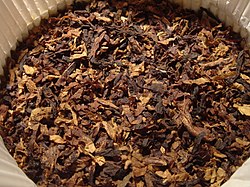Reverse smoking
Reverse smoking is a unique and less common method of smoking in which the lit end of a cigarette, cigar, or other tobacco product is placed inside the mouth. This practice is observed in certain geographic regions, including parts of South India, the Philippines, and among some indigenous communities in South America. The reasons behind reverse smoking can vary, including cultural traditions, the belief that it offers a different smoking experience, or to shield the flame from wind.
Health Risks
The health risks associated with reverse smoking are significantly higher than those of conventional smoking methods. The direct exposure of the oral mucosa to high temperatures and concentrated smoke increases the risk of developing oral cancers, periodontal diseases, and nicotine dependence. The practice has been linked to a higher incidence of precancerous lesions in the mouth, including leukoplakia and erythroplakia, which can evolve into malignant tumors.
Cultural Aspects
In regions where reverse smoking is prevalent, it is often deeply ingrained in the local culture and traditions. It may be passed down through generations, with both men and women participating in the practice. The social and cultural aspects of reverse smoking can make it challenging to address from a public health perspective, as it involves changing long-standing cultural habits and beliefs.
Public Health Interventions
Efforts to reduce the prevalence of reverse smoking and its associated health risks have included public health campaigns aimed at educating communities about the dangers of the practice. These interventions often focus on the increased risk of oral cancers and the benefits of quitting smoking altogether. However, the effectiveness of these campaigns can be limited by cultural resistance and the addictive nature of nicotine.
See Also
References
| Tobacco |
|---|
|
|
| Oral health | ||||||||
|---|---|---|---|---|---|---|---|---|
This oral health-related article is a stub.
|
Transform your life with W8MD's budget GLP-1 injections from $125.
W8MD offers a medical weight loss program to lose weight in Philadelphia. Our physician-supervised medical weight loss provides:
- Most insurances accepted or discounted self-pay rates. We will obtain insurance prior authorizations if needed.
- Generic GLP1 weight loss injections from $125 for the starting dose.
- Also offer prescription weight loss medications including Phentermine, Qsymia, Diethylpropion, Contrave etc.
NYC weight loss doctor appointments
Start your NYC weight loss journey today at our NYC medical weight loss and Philadelphia medical weight loss clinics.
- Call 718-946-5500 to lose weight in NYC or for medical weight loss in Philadelphia 215-676-2334.
- Tags:NYC medical weight loss, Philadelphia lose weight Zepbound NYC, Budget GLP1 weight loss injections, Wegovy Philadelphia, Wegovy NYC, Philadelphia medical weight loss, Brookly weight loss and Wegovy NYC
|
WikiMD's Wellness Encyclopedia |
| Let Food Be Thy Medicine Medicine Thy Food - Hippocrates |
Medical Disclaimer: WikiMD is not a substitute for professional medical advice. The information on WikiMD is provided as an information resource only, may be incorrect, outdated or misleading, and is not to be used or relied on for any diagnostic or treatment purposes. Please consult your health care provider before making any healthcare decisions or for guidance about a specific medical condition. WikiMD expressly disclaims responsibility, and shall have no liability, for any damages, loss, injury, or liability whatsoever suffered as a result of your reliance on the information contained in this site. By visiting this site you agree to the foregoing terms and conditions, which may from time to time be changed or supplemented by WikiMD. If you do not agree to the foregoing terms and conditions, you should not enter or use this site. See full disclaimer.
Credits:Most images are courtesy of Wikimedia commons, and templates, categories Wikipedia, licensed under CC BY SA or similar.
Translate this page: - East Asian
中文,
日本,
한국어,
South Asian
हिन्दी,
தமிழ்,
తెలుగు,
Urdu,
ಕನ್ನಡ,
Southeast Asian
Indonesian,
Vietnamese,
Thai,
မြန်မာဘာသာ,
বাংলা
European
español,
Deutsch,
français,
Greek,
português do Brasil,
polski,
română,
русский,
Nederlands,
norsk,
svenska,
suomi,
Italian
Middle Eastern & African
عربى,
Turkish,
Persian,
Hebrew,
Afrikaans,
isiZulu,
Kiswahili,
Other
Bulgarian,
Hungarian,
Czech,
Swedish,
മലയാളം,
मराठी,
ਪੰਜਾਬੀ,
ગુજરાતી,
Portuguese,
Ukrainian
Contributors: Prab R. Tumpati, MD

